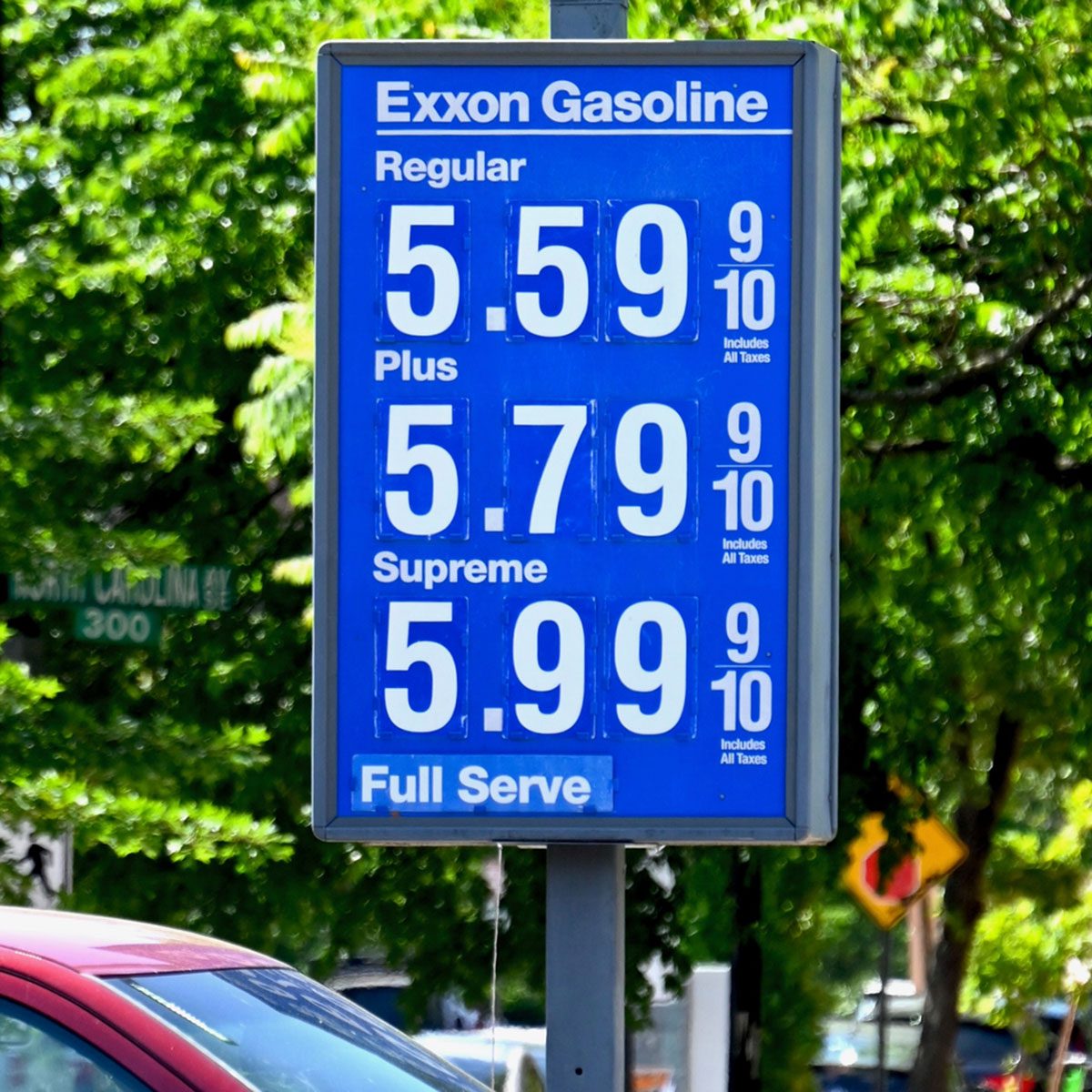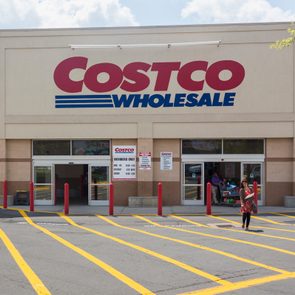It's a real head-scratcher, but there's a historical reason

Here’s the Real Reason Why Gas Prices Always End in 9/10 of a Cent

There’s very little that can unite a group of strangers quite like complaining about gas prices. It’s the easiest conversation starter there is. People are either complaining about the price of gas, asking for the cheapest gas station or telling yarns about how there was a time when you could fill up on just a shiny quarter. And, hey, if you have any solid advice for saving on gas, you’ll be the centerpiece of every party.
But there’s actually something far more interesting about gas—like the answer to the question “Why do gas prices always end in 9/10 of a cent?” Seriously, though, it’s so strange. Electricity bills are probably the only other common things priced to the fraction of a cent. So what’s the deal?
Let’s dig into the history behind this and find out.
Get Reader’s Digest’s Read Up newsletter for more news, humor, cleaning, travel, tech and fun facts all week long.
What’s the history of gas prices?
Maybe you can remember a time when a penny felt like real money—or at least when it could buy a gumball—but back in the early 1900s, 1 cent really meant something. The average price of gas in 1918 was 25 cents per gallon, which might seem like a steal now, but back then, 25 pennies really felt worth something. And, adjusted for inflation, a quarter in 1918 equals $5.76 in 2025.
“When a gallon cost little more than bubble gum, states (Oregon and Colorado) slapped on taxes measured in tenths of a penny,” explains certified financial analyst Michael Ashley Schulman, chief investment officer for a multifamily wealth management firm in Southern California. “Stations dutifully penciled that exact fraction onto their pumps rather than round up a whole cent.”
Schulman goes on to explain that when a gallon of gas fell to under a dime during the Great Depression, gas station owners were constantly trying to outdo their competitors.
“Dropping one-tenth of a cent was a budget-friendly way to shout, ‘Cheaper!’ without actually being meaningfully cheaper,” he says.
Why do gas prices end in 9/10 of a cent?
It took until the Revenue Act of 1932 for a federal gasoline tax to come into play, and it was set in tenths of a cent per gallon.
“Stations simply passed that tiny tax straight to the pump price rather than rounding up a full penny,” Schulman says. “Especially since a whole penny could mean a double-digit percentage swing in cost.”
But that’s not the only reason gas prices end in 9/10 of a cent.

Pricing strategies
Marketing expert and statistician D. Anthony Miles points to “snake oil salesman tricks” to play into consumer-behavior psychology with numbers. “It’s much better to end the numbers with a nine than with a zero,” Miles says. “This trick gives the illusion that the price is cheaper in the customer’s mind.”
Additionally, Miles says that ending something with a fraction of a cent, like 9/10, gives the illusion that pricing is not as high as it seems.
“It’s like the old trick of pricing something ‘3 for $1’ rather than 34 cents each,” he notes. “There is no difference to the retailer, but in consumer-behavior psychology, it appears to be a bargain. It misleads customers into thinking an item is actually cheaper than it is.”
Razor-thin profits
Schulman says that because the fraction has been built into the price of gas for nearly a century, that 9/10 pays a station’s light bill.
“Shave it off, and you nick as much as 10% of today’s razor-thin per-gallon profit,” Schulman says. “Every sign, pump dial and software field expects that [9/10 cent]; stripping it out would be costly. A few brave souls have tried whole-cent honesty—one Iowa crusade even outlawed fractions in the ’80s—but drivers grumbled, margins shrank and the law quietly retreated, tail between its zeroes.”
RELATED:
- Here’s Why Aldi’s Cashiers Stay Seated Behind the Cash Register
- New Report: More Americans Are Doing This to Pay for Groceries—Here’s Why Experts Are Concerned
- Here’s Why You Should Skip Precut Fruit Trays at Costco
About the experts
|
Why trust us
At Reader’s Digest, we’re committed to producing high-quality content by writers with expertise and experience in their field in consultation with relevant, qualified experts. We rely on reputable primary sources, including government and professional organizations and academic institutions as well as our writers’ personal experiences where appropriate. We verify all facts and data, back them with credible sourcing and revisit them over time to ensure they remain accurate and up to date. Read more about our team, our contributors and our editorial policies.
Sources:
- InflationData.com: “Inflation Adjusted Gasoline Prices”
- DollarTimes: “Calculate the Value of $0.25 in 1918”























